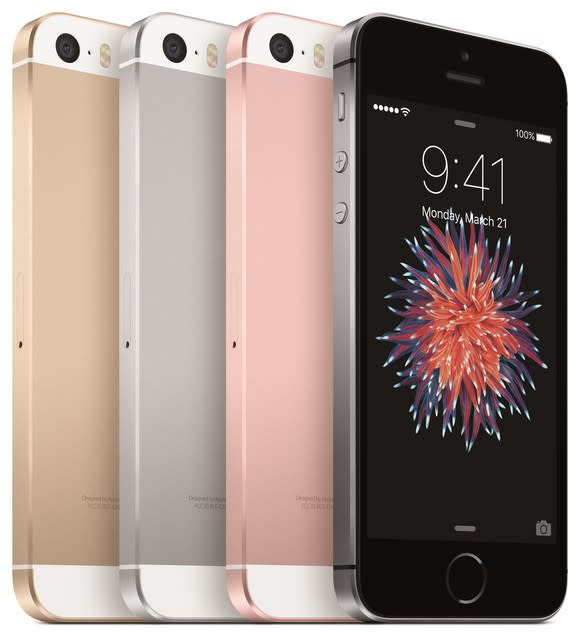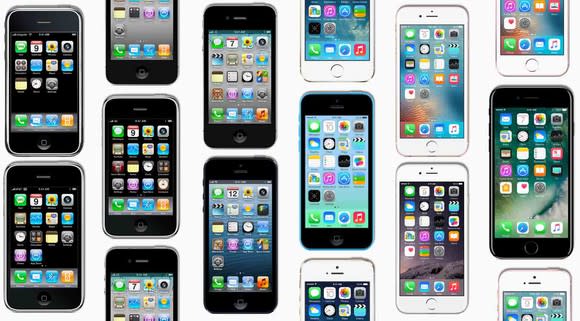Why This Apple Inc. Analyst Might Be Right About a 2018 Supercycle
A little while ago, generally reliable analyst Ming-Chi Kuo with KGI Securities, whose Apple (NASDAQ: AAPL) analysis and predictions have typically been quite accurate, said that while "the market generally refers to 2017 as the super cycle of the iPhone, [Kuo and his team] think the real super cycle will be in 2018."
A "super cycle" in this case refers to a product cycle with atypically high demand as customers accelerate their iPhone purchases due to a major and highly desirable improvement in product features, capability, or form factor.

Image source: Apple.
Kuo's reasoning for that claim is based on the following:
(1) TrueDepth Camera's production issues will be significantly addressed in 2018F; (2) new models launched in 2018F will enjoy a longer sales period than those unveiled in 2017; and (3) the product mix, specifications and designs of new iPhone models from 2018F will be more competitive.
Based on the rumors about Apple's 2018 iPhone lineup that have been trickling out, Kuo is probably onto something.
From this year to next
With this year's iPhones, Apple introduced two solid, but straightforward upgrades to the prior generation iPhone 7-series models. Known as the iPhone 8-series, Apple added some cool technologies like True Tone displays, improved camera sensors, louder speakers, zippier chips, faster wireless subsystems, and wireless charging to the devices.
The iPhone 8-series smartphones are certainly great devices and even coming from an already-excellent iPhone 7 Plus, I've really enjoyed the improvements that Apple added to the iPhone 8 Plus.

Image source: Apple.
Nevertheless, the reality is that in terms of form factor, display type, and display clarity -- three things that prospective customers tend to notice and consider in their purchasing decisions -- the iPhone 8 and iPhone 8 Plus are the same as their respective predecessors.
Kuo's probably right -- next year's iPhone lineup seems far more competitive than this year's lineup.
Not only should Apple have an updated version of this year's iPhone X -- a phone that I believe is incredibly competitive -- but it'll have a larger version of that phone, too, which should appeal to a large swath of potential iPhone users as well as large-screen Android phone users who want to switch to Apple but currently won't due to the lack of a jumbo-sized iPhone X in the marketplace.
What could be a really significant iPhone volume driver for Apple, though, is the rumored upcoming lower-cost iPhone with a 6.1-inch liquid crystal display (LCD). That phone is expected to offer some of the compelling design elements of the iPhone X and its successors such as a TrueDepth 3D sensing front-facing camera and a nearly bezel-free display, but with some compromises to keep costs low.
The iPhone 8 and iPhone 8 Plus appear to have driven a solid amount of demand, but I think that there's a large portion of the iPhone installed base that want to upgrade to something fresh and new but don't want, or simply don't have the means, to pay $999 or more for an iPhone X.
A 6.1-inch LCD iPhone priced at, as Kuo expects, between $649 and $749 could be just the product that a lot of iPhone owners have been waiting for and could trigger significant upgrade activity and, therefore, a so-called "super cycle."
More From The Motley Fool
6 Years Later, 6 Charts That Show How Far Apple, Inc. Has Come Since Steve Jobs' Passing
Why You're Smart to Buy Shopify Inc. (US) -- Despite Citron's Report
Ashraf Eassa has no position in any of the stocks mentioned. The Motley Fool owns shares of and recommends Apple. The Motley Fool has the following options: long January 2020 $150 calls on Apple and short January 2020 $155 calls on Apple. The Motley Fool has a disclosure policy.
